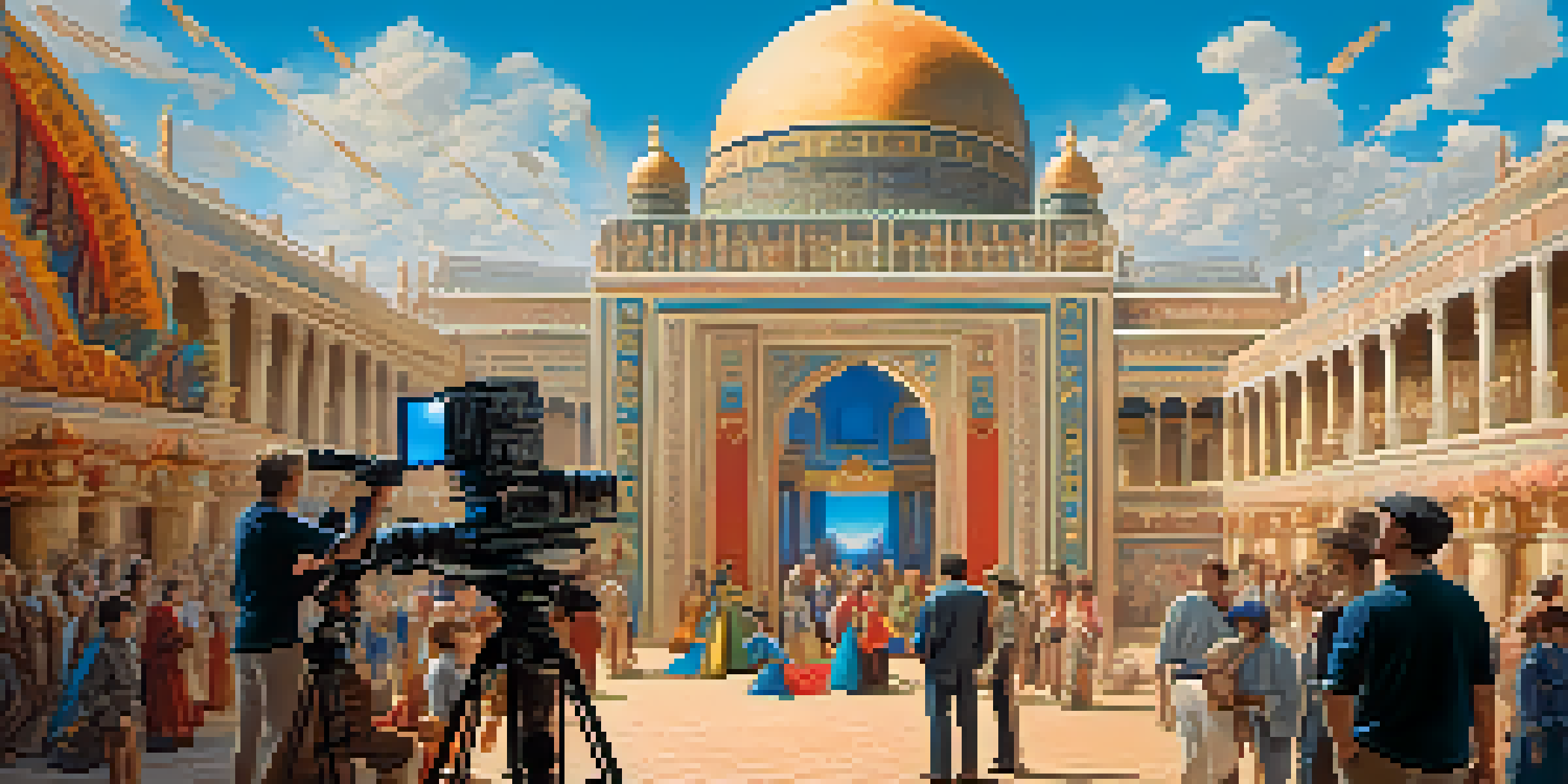Fan Expectations vs. Film Realities: A Delicate Balance

Understanding Fan Expectations in the Film Industry
Fans often have lofty expectations for films, especially when they are adaptations of beloved books, comics, or franchises. These expectations can stem from years of engagement with the source material, leading fans to envision how the story should unfold. When a film is announced, excitement builds, and fans create mental images of characters, plotlines, and even specific scenes they hope to see on screen.
Expectations are a form of first-class truth: if people believe it, it's true.
However, these expectations can be a double-edged sword. While they showcase the passion and investment of the audience, they can also lead to disappointment if the final product diverges from what fans envisioned. This disconnect between expectation and reality can ignite debates and discussions across social media, creating a buzz that can sometimes overshadow the film itself.
Ultimately, understanding these fan expectations is crucial for filmmakers. By acknowledging what fans are looking for, directors and writers can strike a balance between satisfying the audience and exploring creative new directions in storytelling.
The Role of Marketing in Shaping Expectations
Film marketing plays a pivotal role in shaping audience expectations. Trailers, posters, and promotional materials are designed to pique interest and create excitement, often highlighting the most thrilling aspects of a film. Unfortunately, this can sometimes lead to inflated expectations, where fans anticipate a film to be something far beyond what it realistically can deliver.

Consider a blockbuster trailer that showcases stunning visuals and heart-pounding action—fans might come away thinking the entire film will maintain this pace. When the final film presents a slower narrative or delves into character development, it can lead to feelings of dissatisfaction. This phenomenon is not uncommon and highlights the importance of managing expectations through effective and honest marketing strategies.
Fans Have High Expectations
Fans often envision specific outcomes for films, especially adaptations, which can lead to disappointment if their expectations aren't met.
By finding a balance in their marketing approach, studios can help align fan expectations with the film’s actual content. This not only fosters a more positive viewing experience but also builds trust between filmmakers and their audience.
The Influence of Source Material on Fan Expectations
When films are based on existing source material, fans often have a strong attachment to the original story. This can lead to heightened expectations regarding character portrayals, plot fidelity, and overall tone. For example, fans of a popular book series may have a specific vision of their favorite characters, making it challenging for filmmakers to meet those preconceived notions.
The art of storytelling is to bring the audience into the world you've created and allow them to envision it as vividly as you do.
Moreover, the nuances and depth found in books can sometimes be lost in translation to the silver screen. Readers may feel that important themes or character arcs are overlooked or simplified, leading to frustration. This situation exemplifies the delicate balance filmmakers must navigate when adapting beloved stories for a new medium.
To address these challenges, filmmakers can pay homage to the source material while also allowing for creative reinterpretation. This approach can help satisfy longtime fans while also making the film accessible to new audiences who may not be familiar with the original work.
Character Development: A Key to Balancing Expectations
One of the primary aspects that fans look for in a film is character development. Viewers want to see growth, backstory, and emotional arcs that resonate with them. When filmmakers invest time in developing rich, multifaceted characters, it can create a deeper connection with the audience, even if certain plot points differ from what fans anticipated.
However, achieving this level of character development within the constraints of a film's runtime can be a tricky endeavor. Filmmakers must find a way to balance the expectations of fans who might want more action or spectacle with those who crave a deeper emotional experience. This often requires careful storytelling choices to ensure that all audience members feel satisfied by the end.
Marketing Shapes Audience Views
Effective marketing can generate excitement but may also inflate expectations, making it crucial for studios to align promotional materials with the film's actual content.
In the long run, character-driven narratives tend to resonate more profoundly with audiences, often leading to a more positive reception. By focusing on character depth, filmmakers can create a film that feels true to both the source material and the fans’ expectations.
Fan Theories: The Double-Edged Sword of Speculation
Fan theories can be both a blessing and a curse for filmmakers. On one hand, they generate excitement and engagement within the fan community, fostering discussions and anticipation leading up to a film's release. On the other hand, these theories can create unrealistic expectations that are nearly impossible for the filmmakers to meet.
For example, if fans speculate about a major plot twist that aligns with their theories, they might feel let down if the actual film deviates from those predictions. This can lead to disappointment, even if the film is well-crafted and enjoyable in its own right. The challenge for filmmakers lies in navigating these speculative waters while still delivering a compelling narrative.
To mitigate this issue, filmmakers can embrace some fan theories while cleverly subverting others. By incorporating unexpected elements, they can surprise audiences and elevate the viewing experience while simultaneously addressing the hype built around fan speculation.
The Importance of Audience Feedback and Critique
Audience feedback plays a critical role in how films are received. After a movie is released, fans often voice their opinions, offering critiques that can either bolster or dismantle a film's reputation. This feedback loop creates an ongoing dialogue between filmmakers and audiences, shaping future projects and influencing industry trends.
While some filmmakers may take audience criticism to heart, others might choose to stay true to their artistic vision. This difference in approach can result in varying levels of success and acceptance from fans. Understanding this dynamic is crucial for filmmakers aiming to create content that resonates with their audience while maintaining their creative integrity.
Character Development Matters
Investing in character development allows filmmakers to create deeper connections with audiences, which can enhance viewer satisfaction even if plot points differ from expectations.
Ultimately, being open to feedback while finding a balance between artistic expression and fan expectations can lead to more successful films in the long run. Filmmakers who listen to their audience can create more meaningful connections, fostering loyalty and enthusiasm for future projects.
Finding Common Ground: A Path Forward for Filmmakers
Navigating the delicate balance between fan expectations and film realities requires thoughtful consideration from filmmakers. By understanding their audience, managing expectations through marketing, and embracing feedback, they can create films that resonate on multiple levels. This approach fosters a sense of community among fans, inviting them to engage with the film in a meaningful way.
Moreover, filmmakers should not shy away from taking creative risks. While it’s important to honor the source material and meet fan expectations, innovation can lead to fresh interpretations that surprise and delight audiences. By blending familiarity with originality, filmmakers can create a film that feels both nostalgic and new.

In the end, the dialogue between fans and filmmakers is essential for the health of the film industry. By prioritizing communication and collaboration, both parties can work toward a shared goal: creating inspiring and memorable cinematic experiences.